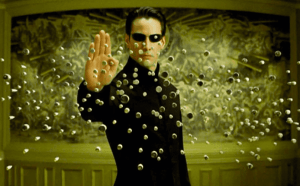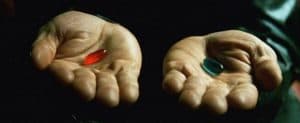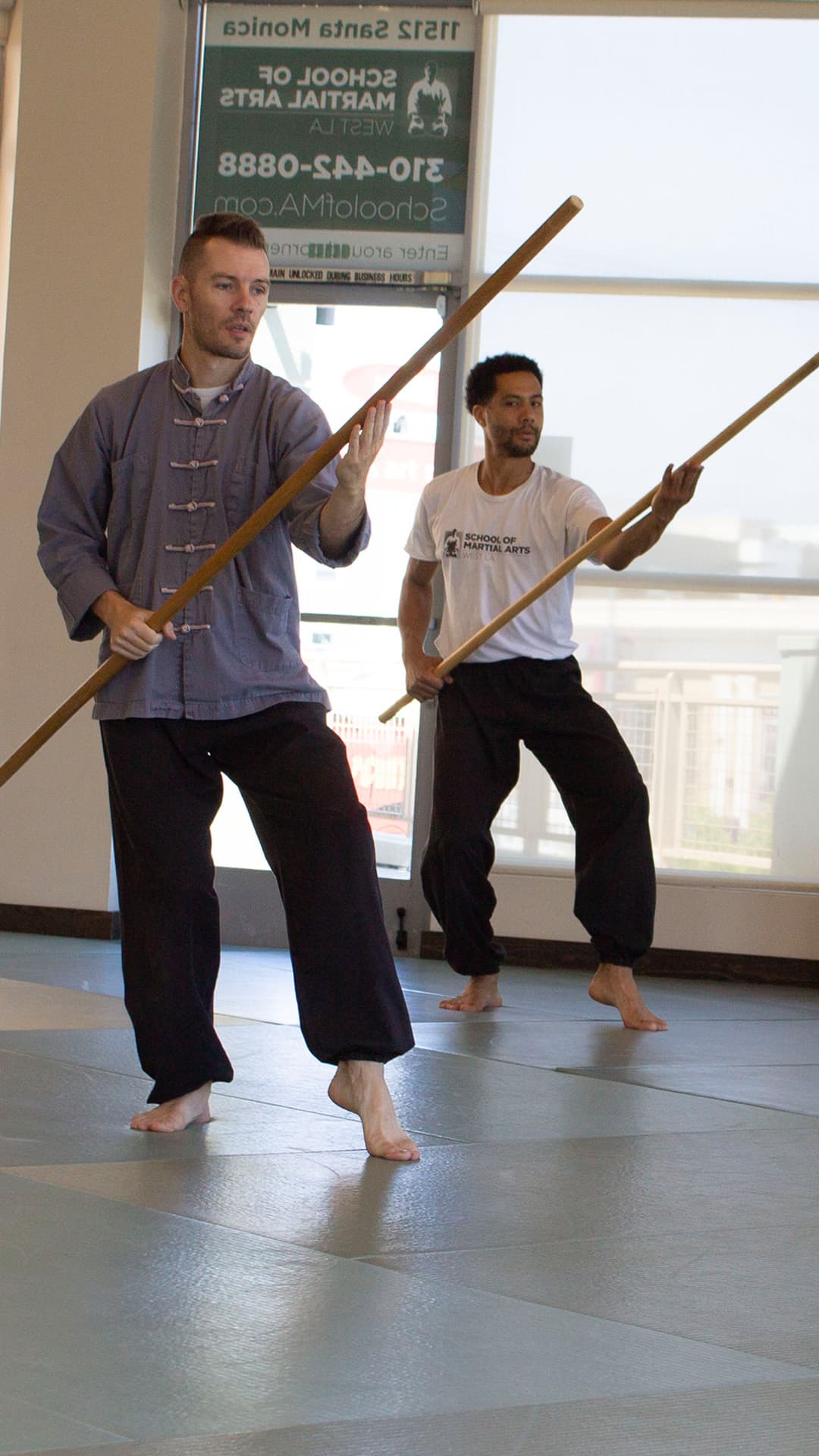When I first saw the Matrix in theaters, I was blown away by the great (now somewhat dated) special effects, but moreso by the philosophical implications. It was the first time I remember thinking, this movie gets it. The idea that we are all trapped in delusion is an ancient one. Hindu scriptures known as the Upanishads called it Maya, illusion or non-truth, while they called truth Atman, which is basically what lies beyond illusion. Plato’s Allegory of the Cave and many timeless stories are based on this idea of breaking free and coming to reality.
but moreso by the philosophical implications. It was the first time I remember thinking, this movie gets it. The idea that we are all trapped in delusion is an ancient one. Hindu scriptures known as the Upanishads called it Maya, illusion or non-truth, while they called truth Atman, which is basically what lies beyond illusion. Plato’s Allegory of the Cave and many timeless stories are based on this idea of breaking free and coming to reality.
When I first began practicing martial arts with Sifu Brown, I heard him talking about this delusion we all live in. I remembered having a daydream as a kid that I was the only real person in the world and everyone else is a robot put in my life to challenge and teach me something. This type of fantasy is apparently quite common and relates to the way we perceive the universe. Meditation is a way of getting beyond this delusion (like taking the red pill). Our practice as a whole serves to do the same.
Separation and the ego
We are born with an ego. It allows us to function in the world and keeps us alive, but it also is the root of our deception. Our egos are what make us feel separate from others and the world. This leads us to constant comparing and judgement of others and things, which leads to all kinds of drama and excitement. While this certainly makes things interesting, it really just serves to distract us from the real goal, which is to see beyond this delusion, break free of the Matrix and become enlightened.
This is an incredibly difficult task  given the tools we are given. Still, with practice, we can learn to glimpse truth. In order to do this, we need to stop identifying with the ego. We cannot perceive truth when we identify with ego. Truth is oneness of all things, beyond judgement and separation, but our ego fundamentally perceives things as separate. Therefor when we ponder things like truth and God by comparing them to our small experience of life, they are impossible to grasp. We must let go of comparison in the attempt to get at what is beyond comparison.
given the tools we are given. Still, with practice, we can learn to glimpse truth. In order to do this, we need to stop identifying with the ego. We cannot perceive truth when we identify with ego. Truth is oneness of all things, beyond judgement and separation, but our ego fundamentally perceives things as separate. Therefor when we ponder things like truth and God by comparing them to our small experience of life, they are impossible to grasp. We must let go of comparison in the attempt to get at what is beyond comparison.
Allegory of the Cave
If we take Plato’s Allegory of the Cave as an example, we can see why this process seems so difficult. In this metaphor, people are chained to the wall in a cave and shown only shadows of reality projected on the opposite side. They never actually see reality and are unable to escape and perceive the real world outside. We are similarly trapped by our egos and our inability to perceive the fullness of reality. We are especially fixated on the chains. This feeling of being oppressed is one that we can relate to on many levels. When we think of breaking free of these chains, breaking free of our delusion, this is problematic though.
See, the “I” that seems trapped is actually the small self, the ego. If we are thinking that we are being imprisoned and need to escape, this is still identifying with the ego. The very resistance against the Matrix is what keeps us trapped. The trick is to realize that “you” don’t truly exist. After all, even you and your ego are part of the illusion. In a way, the way to break free is accept it and stop fighting it. Instead of fighting, imagine yourself melting into it. Let the seemingly impenetrable border between you and everything else dissolve, and there you will find reality.
On the other side of delusion is everything and nothing, but you will not be there.



